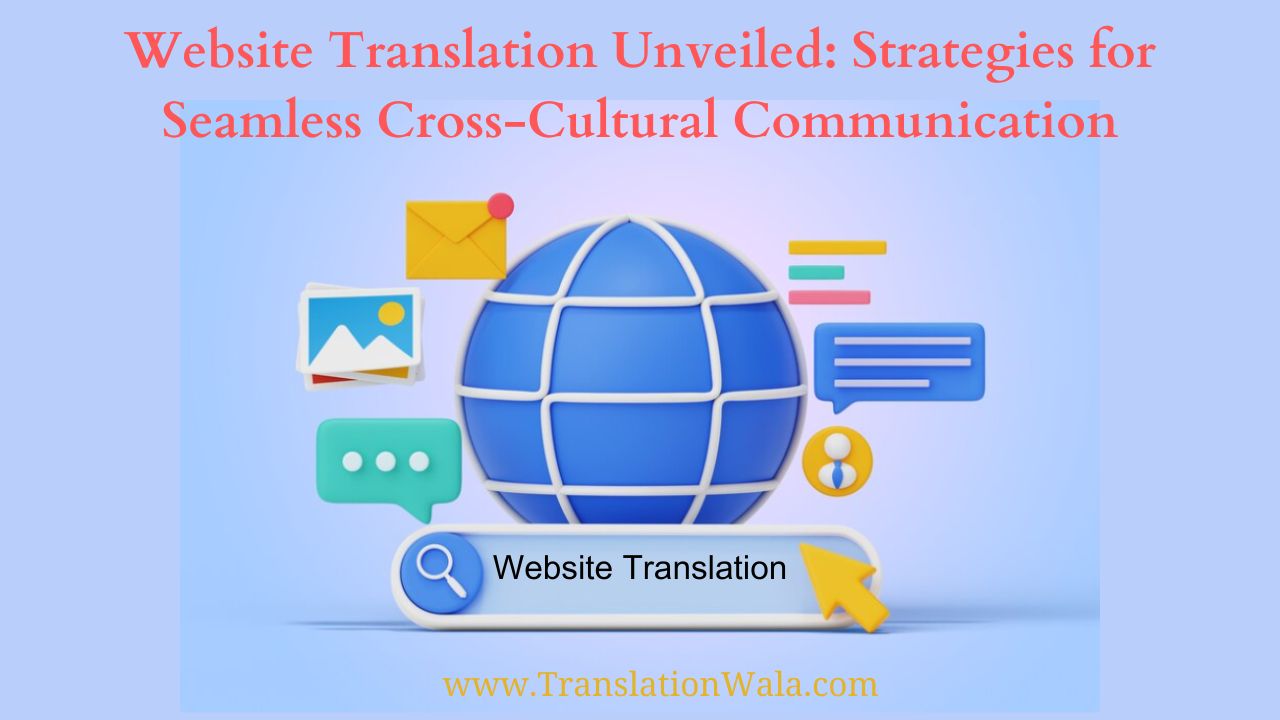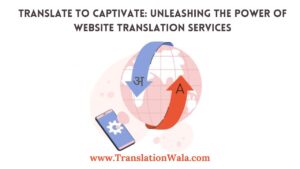In today’s linked world, where lines are becoming less clear and global audiences are calling, websites have become the most important way for businesses and people to show off their goods. But making a website that looks good and has useful information isn’t enough. To fully use its potential, you need to get past the language barrier and make sure that people from different countries can understand and relate to your message. This is where Website Translation skills are useful.
Beyond Words: Understanding the Complexities of Website Translation
It’s not enough to just switch words from one language to another when you translate. It’s about getting your point across, keeping cultural details, and making sure your material fits the needs of each group. This needs a deep understanding of:
- Cultural context: Different cultures have very different ideas about what colors, symbols, jokes, and even the way sentences are put together mean. In one tongue, a word that seems harmless could be insulting or hard to understand in another.
- Localization: Localization is more than just translating words. It makes your website fit the cultural and language norms of the people you want to reach. This could mean using the local units of measurement, date and time displays, and payment forms.
- SEO optimization: If you translate buzzwords without taking into account how people look in your target area, your website might not show up for those people. For online exposure, it’s important to make sure that your translated text is optimized for local search engines.
Also Read: Translation API Mastery: Navigating the Future of Language Integration in Technology

Charting the Course: Effective Strategies for Successful Website Translation
Let’s give you the tools you need to find your way around the world of website translation now that we’ve talked about how complicated it is. Here are some tips to make sure your conversation with people from other cultures goes smoothly:
- Identify your target audience: It’s important to know who you’re talking to. Find out about their age, gender, cultural tastes, and how they act online so you can make your material more relevant to them.
- Invest in professional translation: Online tools can help you quickly, but professional interpreters know a lot about language and culture and can make sure that your versions are accurate and appropriate for your society.
- Embrace technology: Translation management systems (TMS) make the process easier, automate work processes, and make sure that all languages are treated the same. For easy connection, look for tools that work with your content management system (CMS).
- Test and refine: Don’t think that the first time you translate a website, it will be perfect. Test two versions side by side to see which ones your target group likes best, and then make changes based on what you find.
- Go beyond static content: To make the Internet a truly welcoming place for everyone, you might want to translate user-generated content (UGC) like blog comments and reviews.
Building Bridges with Every Click: The Benefits of Seamless Cross-Cultural Communication
If you pay for website translation, you get a lot of benefits:
- Increased reach and engagement: Reach out to more people, get more business, and make meaningful connections with people from other countries.
- Enhanced brand reputation: Being sensitive to other cultures builds trust and loyalty, which is good for your brand’s picture in the global market.
- Boosted SEO and online visibility: To get people in your target areas to visit your website, make it better for local search engines.
- Improved user experience: Make sure that every person, no matter what language they speak, has a smooth and culturally appropriate experience.
Website Translation is not merely a technical endeavor; it unlocks doors to new markets, promotes cultural awareness, and ensures international success. You can transform your website into a potent instrument for connecting with diverse audiences and accomplishing your business objectives on a genuinely global level by implementing these strategies and embracing the complexities of cross-cultural communication.



